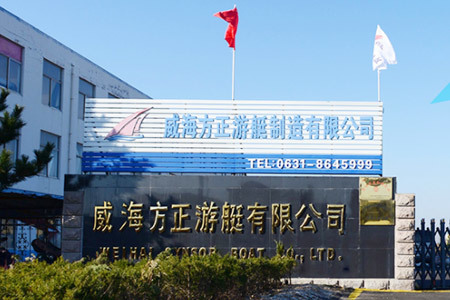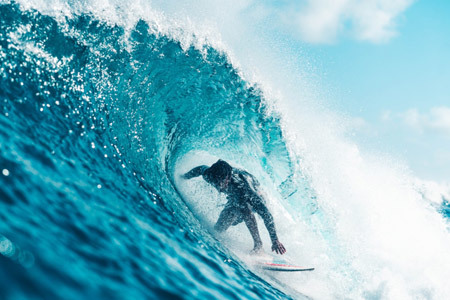In the vast family of vessels, what position does a yacht occupy?
Release time:
2021-11-24 10:29
Source:
The history of ship development from ancient times to the present is long and profound. Liu Xiang's "Shiben" records: "In ancient times, observing falling leaves was used to make boats." Ancient China even became a practitioner of shipbuilding and navigation in the world at that time.
The warships of the Spring and Autumn period, the tower ships of the Han dynasty, the river ships of the Tang and Song dynasties, and the treasure ships of the Ming dynasty, among which Zheng He's treasure ships that sailed to the West seven times, were all significant in terms of size, performance, and range of navigation...
In contemporary times, we should all be proud of our ancestors' contributions to the field of shipping! So, what classifications are there in the vast family of ships? What classifications are there for yachts (recreational vessels)? After reading, you'll know that if you want to play at sea, you need to understand yachts!
01. Transport Ships
(1) Passenger ships: Passenger ships are vessels specifically designed to transport passengers and their luggage. According to the International Convention for the Safety of Life at Sea (SOLAS), any vessel carrying more than 12 passengers is considered a passenger ship. (2) Cargo ships: Cargo ships are a general term for vessels that carry goods. They are divided into dry cargo ships, liquid cargo ships, barges, container ships, and roll-on/roll-off ships.
02. Engineering Ships
(1) Dredgers: Used for dredging mud and sand. (2) Crane ships: Used for lifting heavy objects. (3) Salvage ships: Used for rescuing distressed vessels on the water. (4) Floating docks: Used for lifting ships.
03. Work Ships
(1) Tugboats: Used for towing vessels on the water. (2) Pilot boats: Used to guide foreign vessels safely in and out of ports. (3) Icebreakers: Used to break ice layers. (4) Supply ships: Used to supply fuel and fresh water to vessels in port. (5) Research vessels: Used for conducting marine scientific research. (6) Fireboats: Used to extinguish fires on vessels or at port.
04. Ocean Development Ships
(1) Drilling ships: Used for nearshore shallow water operations and offshore deep water operations. (2) Oil production ships: Platforms for oil and gas collection, separation, and preliminary processing. (3) Guard ships: Auxiliary vessels equipped with rescue and medical equipment.
05. Fishing Boats
(1) Trawl boats: Fishing boats that primarily catch bottom-dwelling fish by dragging nets from the stern or sides. (2) Purse seine boats: Fishing boats that primarily catch mid-water fish using light-attracting purse seines. (3) Whaling boats: Fishing boats specifically designed for hunting whales. (4) Fish processing boats: Fishing vessels that receive catches from fishing boats at sea, process them into various fish products, and store or transport them.
06. Recreational Vessels (Yachts)
In China, yachts are a general term for recreational vessels. The "Yacht Safety Management Regulations" issued by the Ministry of Transport in 2008, which are still in effect today, clearly state that yachts are vessels equipped with mechanical propulsion devices that are limited to use by the yacht owner for sightseeing, leisure, and entertainment activities. In simple terms, any vessel used for leisure and entertainment can be called a yacht. Of course, there are many types of yachts, and the common types are as follows:
(1) Sport boats: Sport boats are small open-deck yachts, generally without cabins or only small cabins, characterized by a planing hull, sporty appearance, and high speed, with lengths ranging from 16 to 33 feet.
(2) Flybridge yachts: Flybridge yachts refer to yachts that have an open deck above the main deck, making them easily distinguishable from other types. The top deck is called the "flybridge," which offers a particularly good view and usually has a helm and a lounge area. Flybridge yachts have spacious and comfortable interiors, suitable for family leisure, overnight stays at sea, business receptions, and small parties.
(3) Wakeboard boats: Wakeboard boats look similar to sport boats but serve completely different purposes, with a significant price difference, generally ranging from 16 to 28 feet. Wakeboard boats are usually divided into V-drive and D-drive inboard engines, with the former suitable for surfing and the latter for wakeboarding. However, many wakeboard boats on the market can meet the needs of both surfing and wakeboarding.
(4) Inflatable boats: Inflatable boats are a type of inflatable craft, divided into fully inflatable and rigid inflatable boats (RIBs), generally under 30 feet. Inflatable boats originally served as tenders, but have undergone significant changes and can now be used for day cruising, scuba diving, and other purposes. They have also seen significant upgrades in configuration, with many luxurious RIBs that match or exceed the performance, quality, and comfort of ordinary sport boats. Inflatable boats are relatively lightweight, resulting in less bumpiness.
(5) Sailboats: It is important to note that sailboats are a type of yacht that uses wind and sail power to navigate. The world's first yacht was a sailboat. Nowadays, sailboats are generally also equipped with engines to facilitate navigation in calm conditions. Sailboats are equipped with keels, masts, and sails.
(6) Fishing boats: Specifically built for recreational sea fishing, different sizes of fishing boats are suitable for rivers, lakes, and the sea. Fishing boats must possess performance indicators such as stability, durability, and strength to withstand harsh conditions during sea fishing activities. Generally speaking, fishing boats in offshore environments are larger and sturdier than those in lakes and inland rivers. Fishing boats typically have the following functions and configurations: fish finders, live wells, outboard engines, rod holders, etc. In terms of materials, aluminum fishing boats are more popular than fiberglass ones because aluminum boats are lighter and more durable. In terms of layout, fishing boats are generally center console, facilitating fishing activities.
(7) Catamarans: Unlike other vessels, catamarans are a type of multihull vessel with two equal-sized parallel hulls. Compared to vessels with a single hull, catamarans are characterized by smaller hull volume, shallower draft, greater displacement, and more usable space on board. Catamarans are the best choice for recreational cruising, and currently, there are catamarans for powerboats, sailboats, and fishing boats.
(8) Pontoon boats: Pontoon boats are typically used in inland waters and other narrow waterways, characterized by a flat shape that relies on pontoons to float on the water. They consist of multiple aluminum pontoons and feature a wide platform, stability, and shallow draft. Typically, pontoon boats range from 15 to 30 feet in length.
(9) Superyachts are very large yachts, generally referring to yachts over 24 meters (79 feet) in length. Superyachts are usually unique because their appearance and interior are custom-made. Therefore, it typically takes several years from ordering to delivery, with some superyachts taking over a year just in the design phase. However, there are also many brands on the market that offer semi-custom superyachts, where the internal layout and soft furnishings can be customized, aside from the exterior. The delivery time for semi-custom yachts is generally shorter than for fully custom ones, making them popular among many wealthy individuals.
07. Other Vessels
(1) Hydrofoil boats refer to vessels that, while traveling at high speeds, have only part of the hull in contact with the water, with most of their weight supported by lift generated by hydrodynamic forces, thus being in a gliding state. (2) Hydrofoil boats are vessels that, while traveling at high speeds, rely on hydrofoils mounted on the lower part of the hull to generate hydrodynamic lift, lifting the hull out of the water. (3) Air-cushion vehicles are vessels that use air at a pressure higher than atmospheric pressure to create a cushion between the bottom of the vessel and the supporting surface, allowing all or part of the hull to detach from the supporting surface and travel at high speeds.
Related News
The inflatable boat factory's direct sales say that the pace of life is getting faster and leisure (free) entertainment is essential. Some people relieve stress through travel, while others do so through leisure and entertainment. Everyone has their own way of relieving stress, and what matters is that we can find relaxation.
How to maintain inflatable boats? Direct sales from the inflatable boat factory teach you.
Inflatable boats are a popular and convenient mode of transportation for long-distance sailors. They are very easy to maintain and can be deflated or simply stored on the deck during long trips. However, even though they are easier to maintain than small boats made of fiberglass, they still need to be kept in good condition for as long as possible. Below, the inflatable boat factory direct sales will teach you how to maintain inflatable boats.
What is the material of inflatable boats like? How to determine the quality? Let's talk about direct sales from inflatable boat factories. There are many types and models of inflatable boats, including those used by the military for crossing rivers and seas, as well as those used for flood control and rescue operations. Below, we will introduce the materials used in inflatable boats from the perspective of direct sales from inflatable boat factories. The materials used to make inflatable boats can generally be divided into two main categories: rubber inflatable boats and PVC inflatable boats.
The manufacturer of inflatable boats tells you about the composition and structure of inflatable boats. The manufacturer of inflatable boats informs you that there are various types and models of inflatable boats. Here, there are high-speed boats designed specifically for speed, fully handmade kayaks, rafting boats for experiencing the thrill of white-water, simple-looking workboats, fishing boats for nearshore fishing, and so on. Since then, many new manufacturers, new models, and new designs have been introduced to the market.
The manufacturer of inflatable boats tells you about the history of inflatable boats.
The manufacturer of inflatable boats tells you about the history of inflatable boats. According to the "Guinness World Records," the history of inflatable boats can be traced back to 880 BC. Ashurnasirpal II ordered his army to continuously inflate skins coated with grease to make them larger so they could cross the river! In ancient China, during the Song and Ming dynasties, people also used sealed inflatable animal skins to cross rivers. The main reason for the use of assault boats is their speed.
Some common knowledge about inflatable boats, explained by the manufacturers of inflatable boats.
The manufacturer of inflatable boats believes that inflatable boats are a type of inflatable craft, which can be divided into fiberglass inflatable boats and rubber inflatable boats. Modern inflatable boats are mainly used by government agencies to carry out maritime tasks, as they are easy to transport, install, and use. They have now become a popular recreational device. Rubber boats are mainly used for rescue, fishing, and entertainment. Inflatable boats are categorized into fiberglass inflatable boats and rubber inflatable boats. Modern inflatable boats are primarily made of fiberglass and are mainly used by government agencies for maritime tasks, but many people also use them for recreation. Rubber inflatable boats are mostly used for rescue and leisure. Inflatable boats are a type of inflatable craft, divided into fiberglass inflatable boats and rubber inflatable boats.
Product recommend






